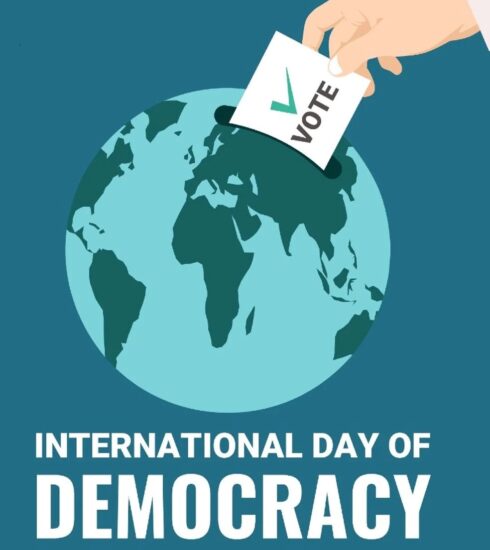The U.S. Supreme Court recently shut down President Biden’s plan to erase billions of dollars in federal student loan debt which comes as a fatal blow to one of the administration’s flagship programmes that would have wiped out billions of dollars in debt for millions of Americans.
In a 6-3 decision penned by Chief Justice John Roberts, the court’s conservative majority held that the executive arm except for Congress had no authorisation for the programme under the Heroes Act, which was passed following the September 11 2001 attacks and allowed the administration to grant student loan relief in a national emergency.
The Heroes Act allows the Secretary of Education to ‘waive or modify’ existing statutory or regulatory provisions applicable to financial assistance programs under the Education Act,” the ruling states, “but does not allow the Secretary to rewrite that statute to the extent of canceling $430 billion of student loan principal.”
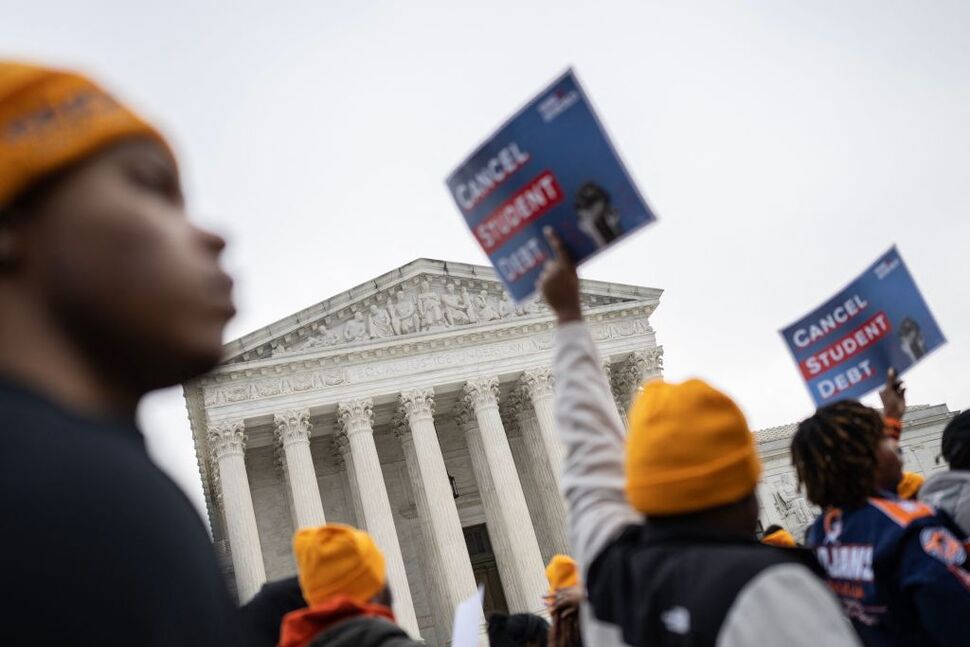
Activists and students protest in front of the Supreme Court during a rally for student debt cancellation, Feb. 28, 2023, in Washington, D.C. Credit- AFP Getty Images
The court ruled in favour of Missouri and five other states, who had argued that the Administration had overstepped its authority to forgive some student loans.
The “modifications” by the Department of Education, Roberts wrote, “created a novel and fundamentally different loan forgiveness program” that “expanded forgiveness to nearly every borrower in the country.”
The high court’s decision comes after a tumultuous year for federal student loan borrowers, who were told in August 2022 by President Biden that the U.S. government would cancel up to $20,000 of debt for anyone who had received a Pell Grant to attend college, and up to $10,000 for the vast majority of remaining borrowers.
As it stands now barring an act of Congress, indebted Americans are on the hook for payments which kick in come October. Student loan payments have been frozen for the last three years due to the pandemic and are set to restart in October. In fairness, that was always going to happen no matter what the Supreme Court decided. Interest on those payments will start accruing from September 1.
Biden’s plan would have provided relief to most federal student loan borrowers – as many as 43 million people. That’s roughly one in eight Americans. Nearly half of those borrowers, roughly 20 million, could have had their student loans erased completely.
Whatever anyone might think of Biden’s proposal, in this moment, the collective disappointment and overwhelming disillusionment of so many Americans is palpable and worth acknowledging.
On the flipside though, critics have argued that canceling the debt would be unfair to those who had already paid back their student loans or who chose not to attend college. They also argue that loan forgiveness does not address the root causes of student debt – the soaring cost of higher education in the US.
Many Republicans had fiercely opposed Biden’s plan, calling it an abuse of executive power and an enormously expensive handout to college-educated Americans. Rep. Virginia Foxx of North Carolina, the Republican chairwoman of the House education committee said she was very pleased that the Supreme Court is following the Constitution. “What the president has done is take on the role of Congress by deciding through a rule to appropriate money from the taxpayers to people who willingly took on a debt. And I think what he has done is totally illegal.”
The Biden administration had argued the debt relief plan would offer critical economic support to Americans following the Covid-19 pandemic. A separate pandemic-era pause on student loan repayments is also set to end in the coming months, raising concerns about financial pressures on the estimated 43 million Americans with student debt and the knock-on effects that will have on the economy.
Biden said his administration would pursue new plans to provide student debt relief based on a different law, the Higher Education Act. The Department of Education would also not report borrowers missing payments to credit agencies for 12 months, he said. He also called the court’s decision “wrong” and said it had “misinterpreted the constitution entirely”.
Former President Donald Trump froze student loan payments at the outset of the pandemic in 2020 and that pause is due to expire this year, resuming what many students and graduates describe as a huge financial strain.
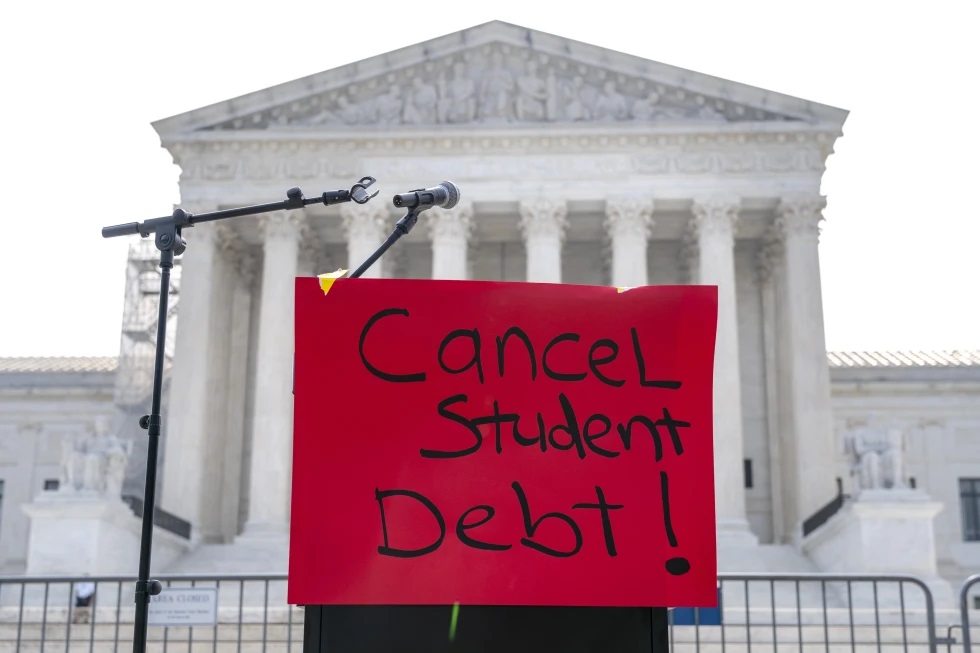
A sign reading “cancel student debt” is seen outside the Supreme Court, Friday, June 30, 2023, as decisions are expected in Washington. Credit-AP Photo
For those looking to congress to provide some succor, that may take a while. With Republicans in control of the House of Representatives, Congress is unlikely to pass college debt relief legislation.
A Senate legislative procedure known as the filibuster, which requires 60 out of 100 senators to agree to end debate and proceed to votes on bills, also makes it difficult to approve student loan forgiveness in the near future, even if Democrats gain control of both chambers of Congress.
The Democrats in Congress are currently miffed at the Supreme Court ruling. From their perspective, they are of the opinion that the Supreme Court’s ruling on the student loan usurps Congress’s authority. Democratic House representative member from California Ro Khanna days after the ruling said this much. Khanna argued that if anyone thought Biden was unduly empowered by the legislation which the president used to issue the debt relief program, “then the solution is Congress can repeal the act”. He went further by stating that all issues regarding the heroes act and student debt relief plan should be argued in Congress and not for unelected justices to override. “This is an issue for federal lawmakers who were chosen by voters”, Khanna said.
All over the country, various polls are being put out to gauge the mood of the populace following the Supreme Court’s ruling. A poll released two days after the ruling by This Week showed that 52% of Americans believed that Supreme Court justices ruled “mainly on the basis of their partisan political view rather than on the basis of the law”. That marked a significant increase from January 2022, when only 38% felt that way.
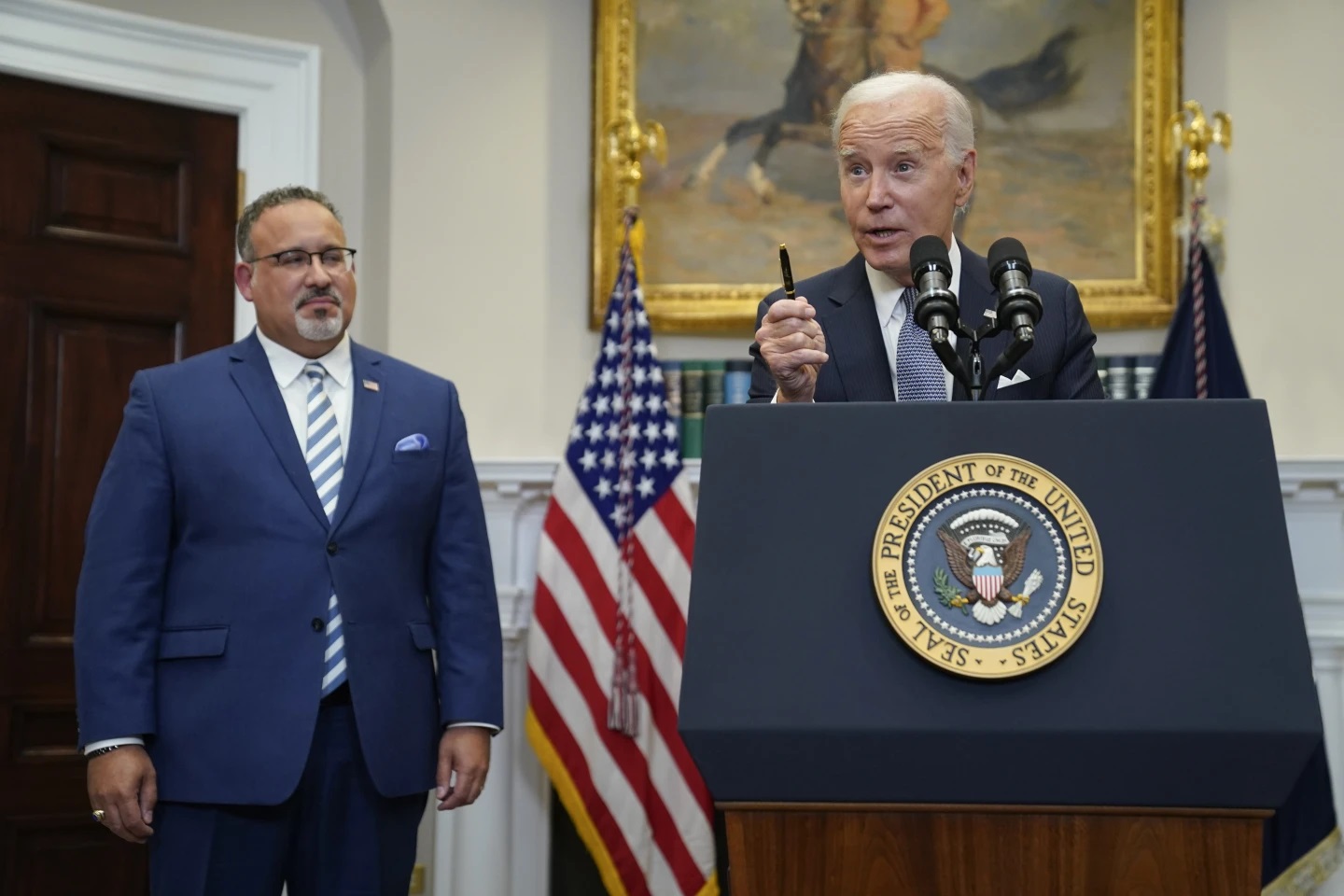
President Biden speaks in the Roosevelt Room of the White House as Education Secretary Miguel Cardona listens in the background. The Biden administration is moving forward on a new student debt relief plan after the Supreme Court struck down it’s initial plan. Credit: NY Times
Khanna said in the short term he would support Biden’s recently announced efforts to implement a new student debt relief plan through the Higher Education Act. That law was unaffected by the Supreme Court’s ruling involving the Heroes Act.
Clearly, the Supreme Court’s decision fell along ideological lines. Chief Justice John Roberts voted against the student loan forgiveness plan and delivered the majority opinion. Associate Justices Clarence Thomas, Samuel Alito, Neil Gorsuch, Brett Kavanaugh and Amy Coney Barrett voted with Roberts.
Barrett filed a concurring opinion, writing that the court “can uphold the Secretary of Education’s loan cancellation program only if he points to ‘clear congressional authorization’ for it.”
The court’s three liberal voices — Justices Elena Kagan, Sonia Sotomayor and Ketanji Brown Jackson — all opposed the decision. Kagan filed a dissent where she called the decision to take up the case, let alone vote on it, an “overreach.”
“The plaintiffs in this case are six States that have no personal stake in the Secretary’s loan forgiveness plan,” Kagan wrote. “They are classic ideological plaintiffs: They think the plan is a very bad idea, but they are no worse off because the Secretary differs. In giving those States a forum — in adjudicating their complaint — the Court forgets its proper role. The Court acts as though it is an arbiter of political and policy disputes, rather than of cases and controversies.”
In the dissent, Kagan wrote that Cardona acted within the “broad authority” provided by the HEROES Act, saying that the decision to alter usual rules “fits comfortably within” the parameters set by the statute.
The six conservative states that opposed Biden’s debt relief plan were Arkansas, Iowa, Kansas, Missouri, Nebraska and South Carolina.
It is estimated that student loan borrowers pay about $70 billion a year on their federal student loans. Any economic benefit that borrowers may have gotten from the suspension of student loan payments is likely to have already been absorbed into the economy over the past three years. In other words, any money borrowers had to spend as a result of the student loan pause has already been spent.
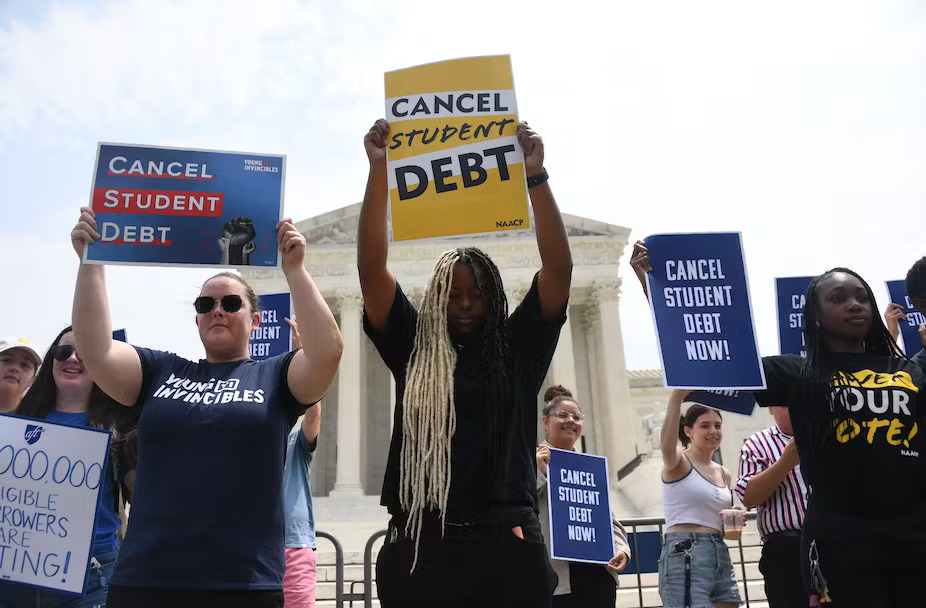
Protesters outside the Supreme Court after itrejected President Joe Biden’s plan to eliminate $430 billion in student loan debt. Credit-AFP
With the resumption of student loan payments, there will likely be a small but negative impact on the economy. This reduction in spending on goods and services is estimated to reduce economic growth by about 0.4%
Among those on the high end of the debt spectrum is Satra Taylor, a part-time student and campaigner for the group Young Invincibles who owes about $103,000. She revealed to the BBC that she expects the figure to grow as she continues a doctoral programme.
“My family does not come from generational wealth. I had no other option but to take out student loans to ensure I could put food on my table and pay my rent,” she said. “I’m deeply saddened by this decision… but I’m also hopeful that President Biden will ensure student debt cancellation happens.”
When student loan borrowers begin to repay their loans in October, those dollars will no longer be available to pay for other things like food, rent, clothing or gas. So it won’t only be hurting the economy, but it will hurt a lot of already struggling Americans as well.
